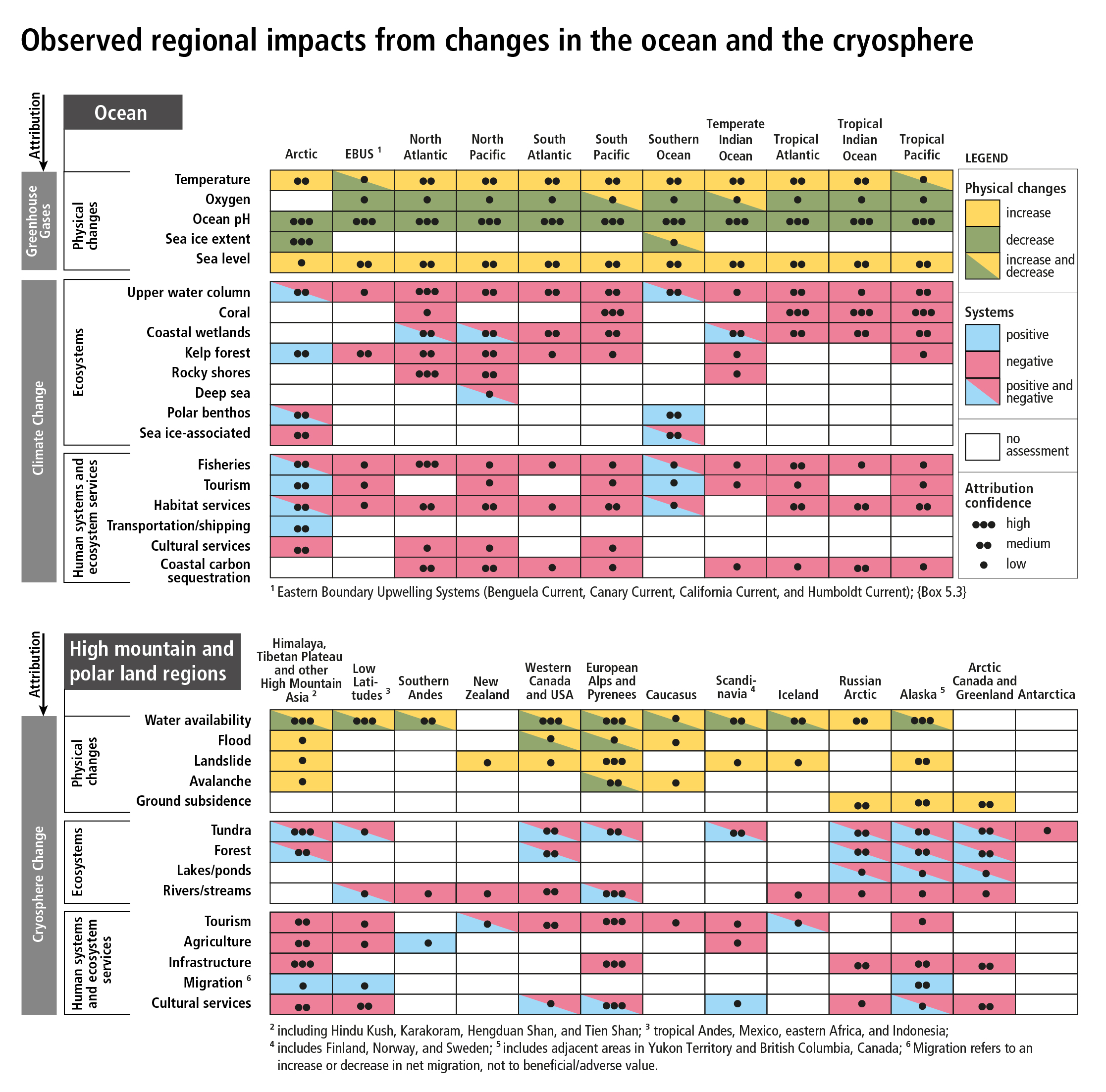
Figure SPM.2
Figure SPM.2 | Synthesis of observed regional hazards and impacts in ocean (top) and high mountain and polar land regions (bottom) assessed in SROCC. For each region, physical changes, impacts on key ecosystems, and impacts on human systems and ecosystem function and services are shown. For physical changes, yellow/green refers to an increase/decrease, respectively, in amount or frequency of the measured variable. For impacts on ecosystems, human systems and ecosystems services blue or red depicts whether an observed impact is positive (beneficial) or negative (adverse), respectively, to the given system or service. Cells assigned ‘increase and decrease’ indicate that within that region, both increase and decrease of physical changes are found, but are not necessarily equal; the same holds for cells showing ‘positive and negative’ attributable impacts. For ocean regions, the confidence level refers to the confidence in attributing observed changes to changes in greenhouse gas forcing for physical changes and to climate change for ecosystem, human systems, and ecosystem services. For high mountain and polar land regions, the level of confidence in attributing physical changes and impacts at least partly to a change in the cryosphere is shown. No assessment means: not applicable, not assessed at regional scale, or the evidence is insufficient for assessment. The physical changes in the ocean are defined as: Temperature change in 0–700 m layer of the ocean except for Southern Ocean (0–2000 m) and Arctic Ocean (upper mixed layer and major inflowing branches); Oxygen in the 0–1200 m layer or oxygen minimum layer; Ocean pH as surface pH (decreasing pH corresponds to increasing ocean acidification). Ecosystems in the ocean: Coral refers to warm-water coral reefs and cold-water corals. The ‘upper water column’ category refers to epipelagic zone for all ocean regions except Polar Regions, where the impacts on some pelagic organisms in open water deeper than the upper 200 m were included. Coastal wetland includes salt marshes, mangroves and seagrasses. Kelp forests are habitats of a specific group of macroalgae. Rocky shores are coastal habitats dominated by immobile calcified organisms such as mussels and barnacles. Deep sea is seafloor ecosystems that are 3000–6000 m deep. Sea-ice associated includes ecosystems in, on and below sea ice. Habitat services refer to supporting structures and services (e.g., habitat, biodiversity, primary production). Coastal Carbon Sequestration refers to the uptake and storage of carbon by coastal blue carbon ecosystems. Ecosystems on Land: Tundra refers to tundra and alpine meadows, and includes terrestrial Antarctic ecosystems.